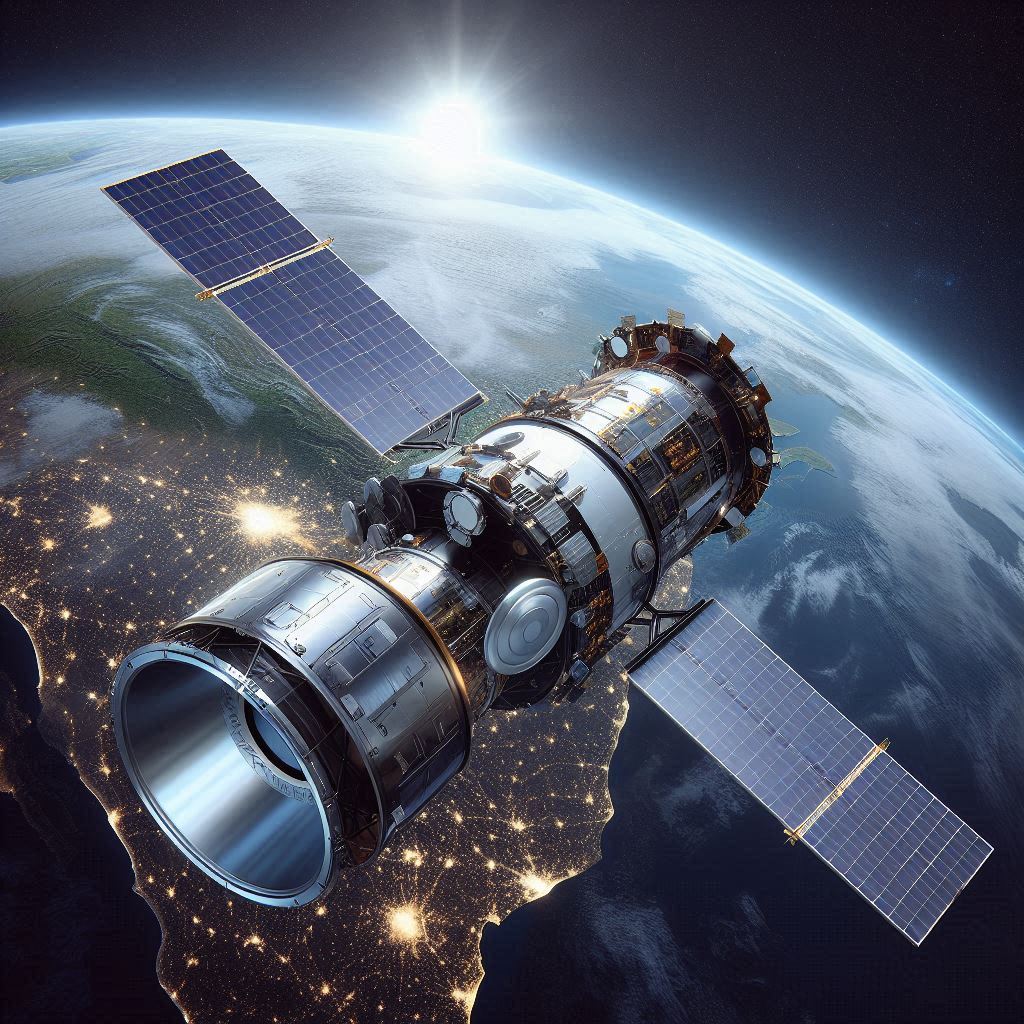Contents
- 1 Revolutionizing Space Exploration with Zero Fuel
- 2 Prof. Aécio D’Silva, Ph.D. AquaUniversity
- 3 What is Propellantless Propulsion?
- 4 Science Behind Propellantless Propulsion
- 5
- 6 Advantages of Propellantless Propulsion
- 7 Current Developments and Research
- 8 Challenges and Limitations
- 9 Future Prospects
- 10
- 11 What are some real-world applications of this technology?
Revolutionizing Space Exploration with Zero Fuel
Prof. Aécio D’Silva, Ph.D.
AquaUniversity
Propellantless Propulsion – Imagine a spacecraft that can travel through the vastness of space without the need for traditional fuel. This is not science fiction but a burgeoning reality thanks to propellantless propulsion technology. This groundbreaking innovation promises to revolutionize space travel, making it more efficient, cost-effective, and sustainable.
What is Propellantless Propulsion?
This propulsion refers to the generation of thrust without the need to expel mass, unlike conventional rocket engines that rely on burning fuel. This technology leverages electric fields, magnetic fields, or other novel mechanisms to produce thrust, potentially transforming how we explore space.
Science Behind Propellantless Propulsion
At the core of this propulsion is the principle of generating force without expelling mass. One of the most promising approaches involves using asymmetrical electric fields to create a net force. This method, pioneered by researchers like Dr. Charles Buhler, has shown that electric fields alone can generate sustainable thrust.
Advantages of Propellantless Propulsion
- Efficiency: Traditional rockets carry massive amounts of fuel, limiting their payload capacity. Propellantless systems eliminate this need, allowing for more efficient space missions.
- Cost-Effectiveness: Reducing or eliminating fuel requirements can significantly lower the cost of space missions, making space exploration more accessible.
- Sustainability: This propulsion reduces the environmental impact of space travel by minimizing the need for chemical propellants.
Current Developments and Research
Researchers and engineers are actively developing various propellantless propulsion systems. For instance, the Exodus Propulsion Technology team led by NASA physicist Dr. Charles Buhler has created a device that produces 1g (9.8 m/s²) thrust in hard-vacuum conditions. This breakthrough could pave the way for future space missions that are more efficient and less reliant on traditional fuel sources.
Challenges and Limitations
Despite its potential, propellantless propulsion faces several challenges. One major hurdle is the need for high-power electric fields, which require advanced power generation and storage solutions. Additionally, the technology must be rigorously tested in space conditions to ensure its reliability and effectiveness.
Future Prospects
The future of this propulsion is incredibly promising. As research progresses, we can expect to see more advanced and efficient systems that could revolutionize space travel. This technology could enable longer missions, deeper space exploration, and even the possibility of interstellar travel.
What are some real-world applications of this technology?
This propulsion technology has several exciting real-world applications that could revolutionize various aspects of space exploration and satellite operations. Here are some key applications:
-
Satellite Station-Keeping
Visual: Satellite in orbit with propellantless propulsion system
Propellantless propulsion can be used for satellite station-keeping, which involves maintaining a satellite’s position in its designated orbit. Traditional satellites rely on fuel for this purpose, but propellantless systems can extend the operational life of satellites by eliminating the need for fuel.
-
Deep Space Exploration
Visual: Spacecraft traveling through deep space
For missions beyond our solar system, propellantless propulsion offers a sustainable solution. It can enable spacecraft to travel longer distances without the need for large fuel reserves, making interstellar exploration more feasible.
-
Space Debris Removal
Visual: Spacecraft using propellantless propulsion to capture debris
Space debris is a growing concern for space agencies. Propellantless propulsion systems can be used to maneuver debris removal satellites, helping to clean up space and reduce the risk of collisions with operational satellites.
-
CubeSats and Small Satellites
Visual: Cluster of CubeSats in space
CubeSats are small, standardized satellites primarily used in low Earth orbit (LEO). Due to their limited fuel supply, CubeSats and small satellites benefit greatly from propellant-less propulsion. These systems can provide the necessary thrust for maneuvering and maintaining orbits, enhancing the capabilities of small satellite missions.
-
Long-Duration Space Missions
Visual: Spacecraft on a long-duration mission
For missions that require long-term operation, such as those to Mars or other distant planets, propellantless propulsion can provide a continuous thrust without the need for refueling. This makes it ideal for sustained exploration missions.
Concluding, propellantless propulsion technology represents a significant leap forward in space exploration. Eliminating the need for traditional fuel offers a more efficient, cost-effective, and sustainable way to explore the cosmos. As research and development continue, we are on the brink of a new era in space travel, one that could take us farther than ever before.
This propulsion technology holds immense potential for transforming space travel and satellite operations. By eliminating the need for traditional fuel, it offers a more efficient, cost-effective, and sustainable approach to exploring and utilizing space. As research and development continue, we expect to see even more innovative applications of this groundbreaking technology.
References:
https://www.nasa.gov/smallsat-institute/sst-soa/in-space_propulsion/:
NASA’s In-Space Propulsion
NASA Veteran’s Propellantless Propulsion Drive
https://link.springer.com/content/pdf/10.1007/978-3-7091-0547-4_8.pdf:
Springer – Propellantless Propulsion
https://ntrs.nasa.gov/citations/20020022193:
NASA’s Small Spacecraft Technology
https://www.aerospacedefensereview.com/news/the-promise-and-potential-of-propellantless-propulsion-technology-nwid-1663.html:







